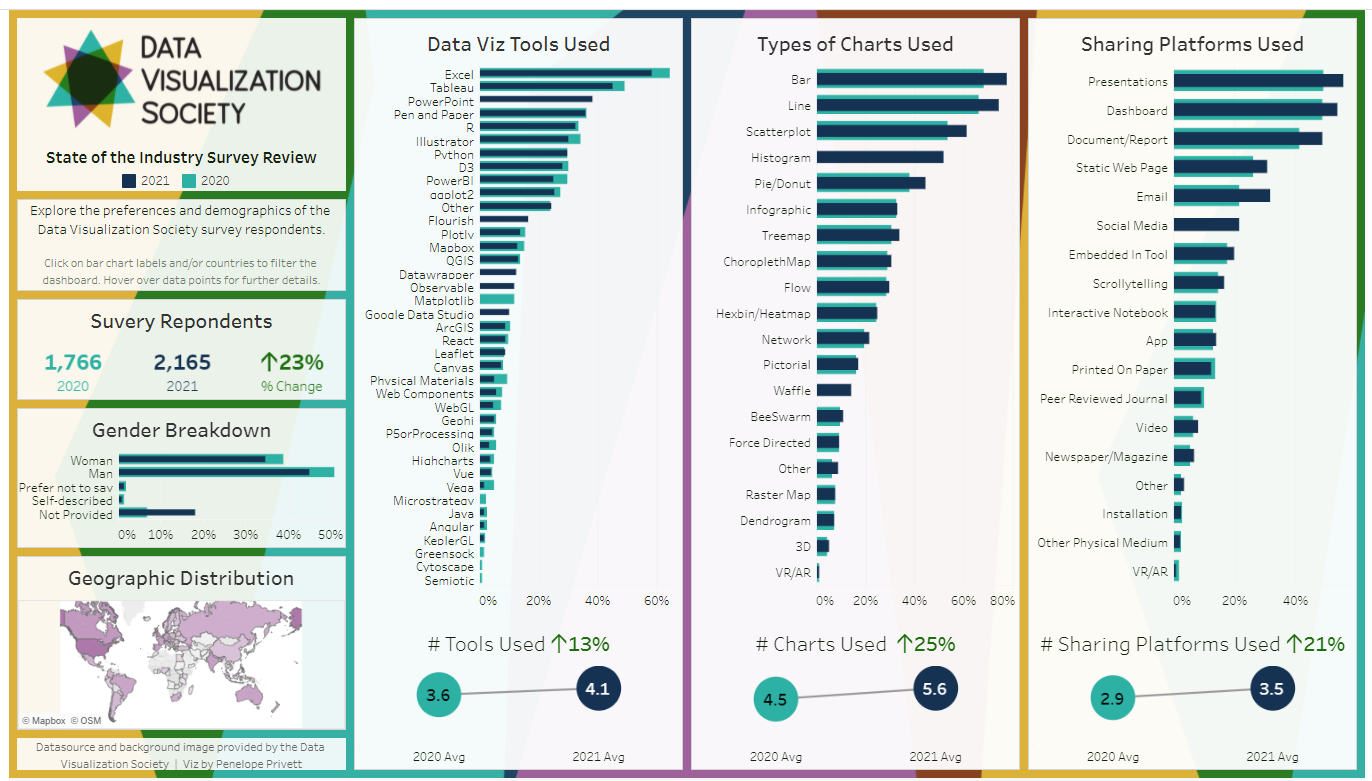Created by: Guillermina Sutter Schneider - Data Scientist
Many many times I have found myself late at night cleaning up some random dataset in order to create a data visualization about it. And I did it just for the enjoyment. Data visualization makes me happy and I could spend hours and hours doing it. From the very first sketch to picking the grain intensity of the canvas background or fixing the drop shadow, I enjoy every single step of it.
I have always wondered how other dataviz practitioners felt while creating a data visualization: do they also do it because they enjoy it? Do they do it to build a portfolio or to build a particular skill? These questions made me want to find out more about how many hours other people spend doing it and why they do it.



















